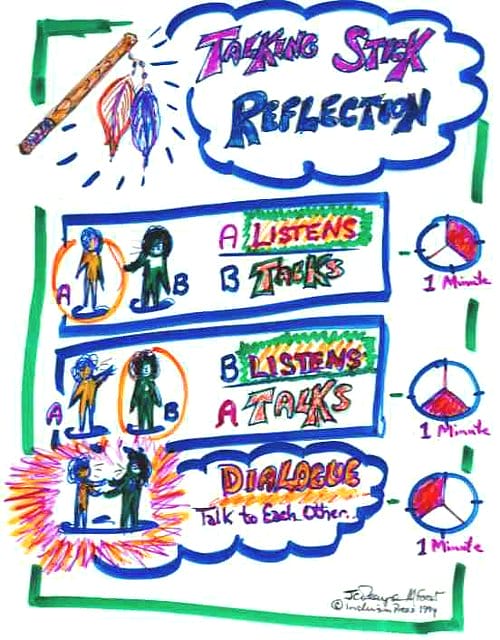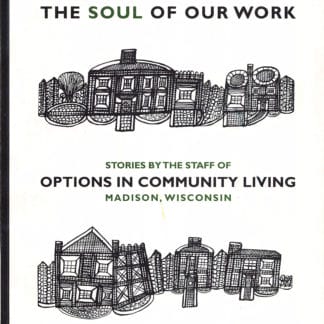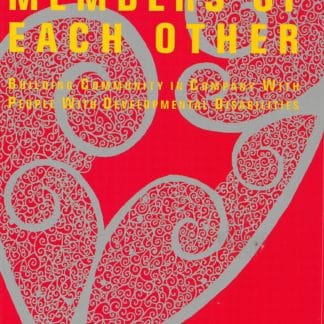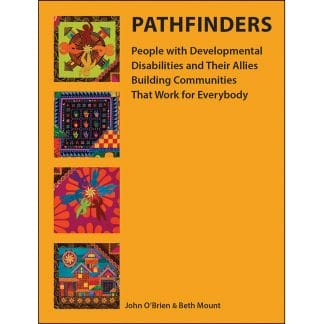
An Exercise in Listening
The Talking Stick is an ancient Aboriginal tool for healing relationships through learning to listen to others and to speak your truth. We have asked permission from Indigenous friends to use the Talking Stick to help connect people to one another and to begin dialogue through listening. They have graciously granted us their blessing.
The Talking Stick is appropriate to modern needs. The stick is passed around the circle. The person holding the Talking Stick is the only one who speaks. Everyone else listens. There is absolutely no interruption. Everyone’s viewpoint is heard. Great Councils in Indigenous America were held in this fashion and the Council of Elders made decisions after listening to all the viewpoints expressed.
We have adapted this philosophy into a short and powerful tool to stop the bustle and hysteria – for three minutes. It is one of our most powerful transformative tools for families, schools, human service organizations, teams – anyone willing to listen. It creates a climate for effective communication and teaches listening skills.
We begin by setting a tone with gentle music. We use the music of Carlos Nikai – a Navaho flute that settles the room in a magic way. Then we explain the rules of the exercise.
Minute One
Person A gets the talking stick and has one uninterrupted minute to speak or communicate in silence.
Person B listens and does not interrupt the words or the silence.
After one minute, the facilitator (who is timing the exercise) dings a little chime and the talking stick passes to person B.
Minute Two
Person B gets the talking stick and has one uninterrupted minute to speak or communicate in silence.
Person A listens and does not interrupt the words or the silence.
After person B speaks, the two participants can share a one or two minute dialogue.
Minute Three
Dialogue — talk WITH each other.
We are avoiding discussion (which comes from the root word percussion, concussion – hitting each other over the head with ideas) and moving to the word dialogue (which comes from the root word dialogos or “thinking together.”)
The topic can relate to work issues, values issues or whatever needs dialogue. In large groups, we usually have one pair do this publicly to demonstrate the process. Then we get the room into pairs who will listen to each other for 3–4 minutes. This can be done several times during a workshop.
No one need be afraid they will not be heard. No one may dominate. The Talking Stick is given to each person, so everyone has an equal l opportunity to express themselves. This makes the Talking Stick an excellent tool for conflict resolution.
We also build in time to process what it was like to listen and to be listened to. Many of us in North America find listening to one another difficult — we want to jump in, interrupt or add pearls of wisdom. This exercise, in conjunction with our Scuba Rules: Stop, Breathe, Think then Act, can change the atmosphere in a workshop or organization. The Talking Stick Reflection is a foundation for sharing. It creates a safe space for people who have worked together for years, but never really connected, to talk to one another from the heart.
___________________
This material may be duplicated however not for any profit-driven enterprise.
If copied please notify us on your intentions
Designed by Marsha Forest & Jack Pearpoint
Copyright 1995 Inclusion Press



